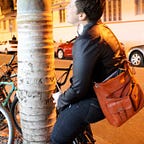Cupping for Pain, Sports & Sleep — Integrative Alchemists
In his 2016 Olympics appearance, Michael Phelps introduced much of the world to an ancient practice of cupping. Many people were puzzled by the strange, bruise-like marks visible on his skin. These days, cupping has become somewhat mainstream and is now found in many sports medicine, physical therapy, and massage practice. But it’s roots go back thousands of years to Chinese Medicine, and perhaps in a parallel evolution, in ancient Egypt and Greece.
The therapy involves using cups (usually made of glass, but sometimes metal or plastic) to form a vacuum and pull up the skin. In doing so, it draws blood upwards and into the muscle tissue. It has become adapted in sports medicine largely for pain management and to improve recovery time.
From a classical Chinese Medicine perspective, cupping is though to stimulate by dispelling stagnant blood and lypmph. There is more modern thought that qi runs through meridians which perhaps correspond to fascial tissue. Certainly lifting the skin and muscles could help create space to clear blockages within the fascia. Indeed, in one Canadian publication they even call the practice myofacial cupping.
Cupping has been used outside of China for centuries as well. In Islam, Mohammad advocated as a sunna a practice of wet cupping known as hijama (rough translation of to suck, or to return to a normal state). In this case, instead of simply pulling up intact skin into the cup, one creates a small incision and then applies the cup, with the idea being the toxins/bad blood/excess fluids are drawn up out of it. The intent was more than just cleaning a random wound, but a spiritual and overall health realignment.
This theory and practice of this ‘wet cupping’ is very much alive in the form of venemous snake kits. My wife and I honeymooned in the Badlands of South Dakota, where there were frequent signs like the one below advising of the regular presence of rattlesnakes. We bought an anti-venom kit at REI before the trip and the basic principle is- stick a cup over the snake bite and suck out the toxin. But I digress.
Cupping is obviously prominent for various uses worldwide. So what does modern science have to say? The NIH compiled a meta-analysis of hundreds of randomized controlled trials and meta-analyses showing it’s value in chronic pain. Another NIH meta-analysis found improved outcomes in both lower back pain and cancer-related pain, and found that even if cupping alone wasn’t perfect, it could reduce use of NSAIDs. One study found improvements in knee-pain related to osteoarthritis. Another study found cupping could not only impact pain, but sleep loss related to pain. Three proposed mechanisms of actions noted in the latter study were:
“(1) pain reduction could be caused by deforming the skin which may stimulate Aβ fibers in painful skin regions, (2) manipulations may stimulate inhibitory receptive fields of the multireceptive dorsal horn neurons, and (3) the setting provides a feeling of relief from physical and emotional tensions and socially comforting effect. Cupping have effect on disturbed neurovegetative functions and diseased viscera and may affect the immune system in 2 ways: by irritating the immune system, which causes local inflammation, and subsequently activates the complement system, and increasing the level of interferon and tumor necrotizing factor; or by increasing the lymph flow, in which protein biosynthesis plays an important role.”
In my work as a sleep coach, perhaps the thing I am least able to help patients with is insomnia related to chronic pain. It is great to see this low-risk therapy may offer some drug-free relief for pain-related insomnia. As chronic pain is a major driver of the opioid crisis, there is little downside to trying non-invasive cupping for pain issues. At worst, the side effects are some unsightly hickey looking bruises.
My experience: My acupuncturist uses cupping occasionally on me when I get that knot in my upper left shoulder that always seems to develop under periods of high stress. She combines the cups with arnica lotion, a very soothing herbal analgesic compound. I did buy myself a low-cost set of cups on Amazon, but it was somewhat difficult to apply them to my own back where I usually need them, and I didn’t want to bug anyone else too much. I do look forward to the experience when I get them done in acupuncture. It’s basically like a massage. I find any residual marks well worth it.
Have you tried cupping? Leave a comment on your experiences if so!
Related Articles The Pineal Gland- Located at the Intersection of Science and Spirituality Qi Gong is Meditation in Motion Meditation for Neurotics Moxabustion: Feel the Burn!
Enjoying the read? We are a humble operation writing free original content out of passion. Please share this on social media and/or subscribe to help us keep the content coming!
Disclosure: We participate in the Amazon Associates program and may get a very small commission if you click on a link and purchase the products noted. We only link to products we love.
Originally published at https://integrativealchemists.com on June 2, 2020.
